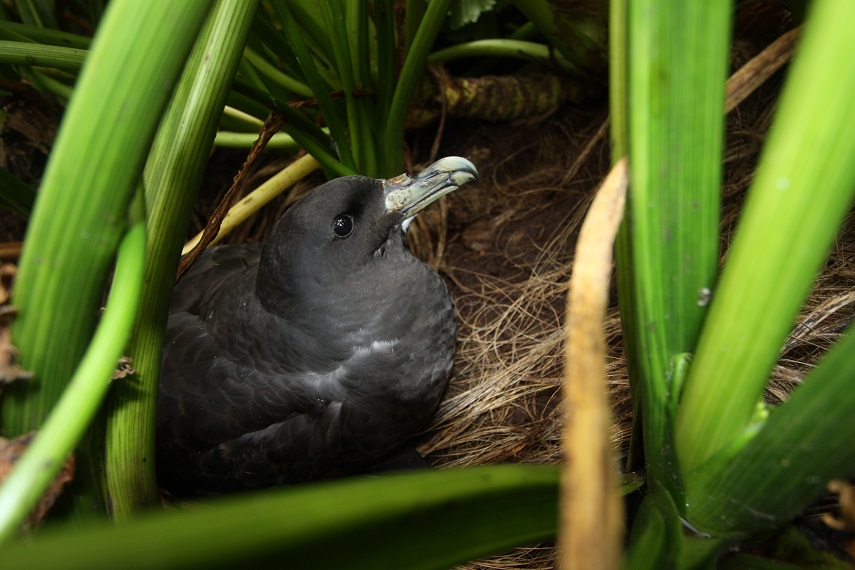
White-chinned Petrel on Disappointment Island, Auckland Islands, photograph by Kalinka Rexer-Huber
Kalinka Rexer-Huber (Parker Conservation, Dunedin, New Zealand) and colleagues have published in the journal Notornis on the breeding numbers of White-chinned Petrels Procellaria aequinoctialis on the Auckland Islands.
“In New Zealand’s subantarctic Auckland Islands, the island-wide population size of white-chinned petrels (Procellaria aequinoctialis) is unknown. On ten islands in the group, surveys for burrow distribution were followed by whole-island burrow counts or stratified random sampling of white-chinned petrel habitat. White-chinned petrel burrow density, burrow occupancy, and slope-corrected surface areas were used to calculate the breeding population size. Burrows were patchily distributed and most abundant in dense megaherb communities. White-chinned petrel burrow density at Adams Island was 701 burrows/ha (95% CI: 480–803 burrows/ha). Burrow occupancy was 0.59 ± 0.02 (mean ± se) at the start of incubation. An estimated 28,300 (10,400–44,800) white-chinned petrel pairs breed on Adams Island. Including the small colonies on Ewing, Monumental, and Enderby Islands (together c. 100 pairs) and the estimated 155,500 breeding pairs on Disappointment Island, the Auckland Island group has an estimated 184,000 (95% CI: 136,000–237,000) pairs of breeding white-chinned petrels”.
With thanks to Kalinka Rexer-Huber.
This publication forms part of a compilation of 19 papers appearing in a special issue of the journal Notornis of Birds New Zealand that covers many aspects of the avifauna of the Auckland Islands. The special issue is also being made available as a 436-page book with the title Lost Gold: Ornithology of the subantarctic Auckland Islands. Edited by Colin Miskelly and Craig Symes, it can be ordered for purchase (click here). An interview with the two editors gives information about their work with the book. Click here to access abstracts for all 19 papers.
Reference:
Rexer-Huber, K., Thompson, D.R. & Parker, G.C. 2020. White-chinned petrel (Procellaria aequinoctialis) burrow density, occupancy, and population size at the Auckland Islands. Notornis 67: 387-401.
John Cooper, ACAP Information Officer, 09 April 2020

 English
English  Français
Français  Español
Español